- NEED HELP? CALL US NOW
- +919995411505
- [email protected]
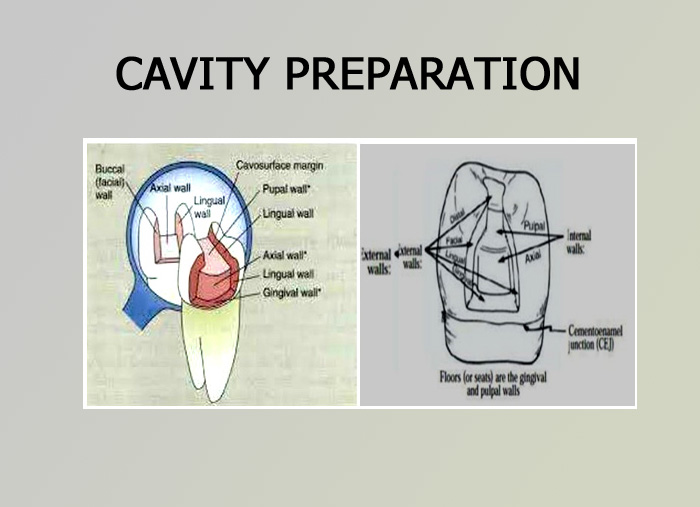

CLASSIFICATION OF CAVITY
- Pit and fissure cavities ( Class I cavities)
- Smooth surface cavities( Class II, III, IV, V cavities) :
- Simple- One surface
- Compound- Two surfaces
- Complex- Three or more surfaces
PRINCIPLES OF CAVITY PREPARATION
according to GV black

V BLACK suggested that it was necessary :
- To remove additional tooth structure to gain access and visibility
- To remove all trace of dematerialized enamel and dentine from the floor, walls and margins
- To provide mechanical interlocking design
- To extend the cavity to self -cleansing areas to avoid recurrent caries
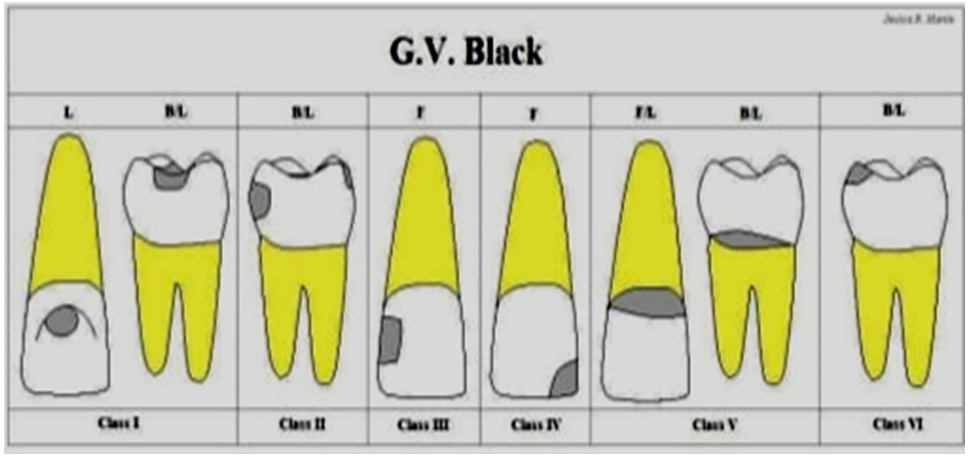
PRINCIPLES OF CAVITY PREPARATION
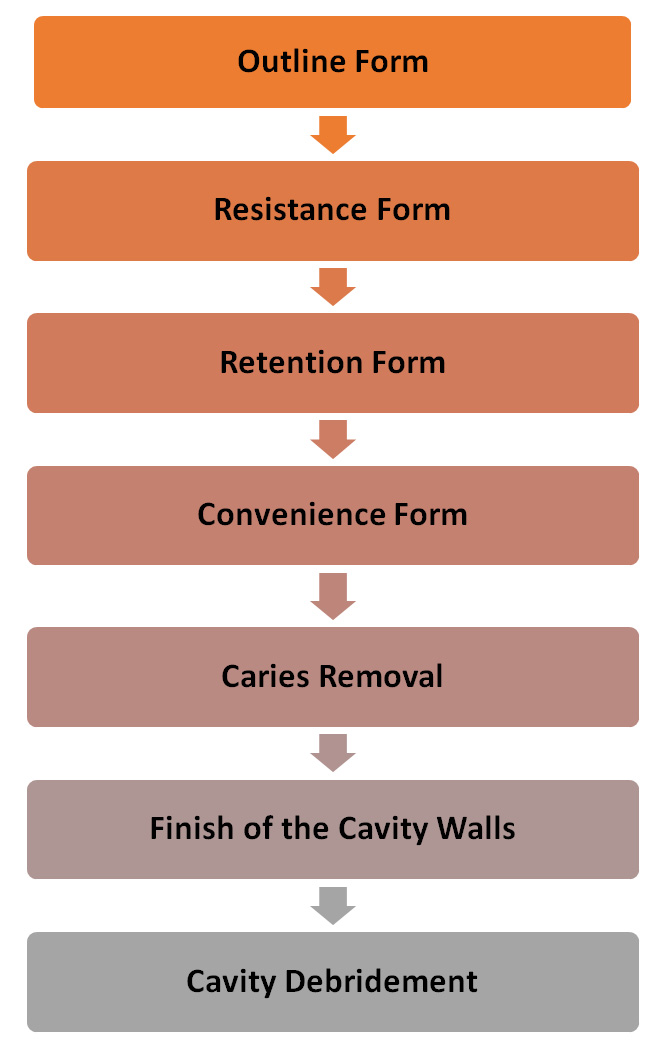
STEPS IN CAVITY PREPARATION
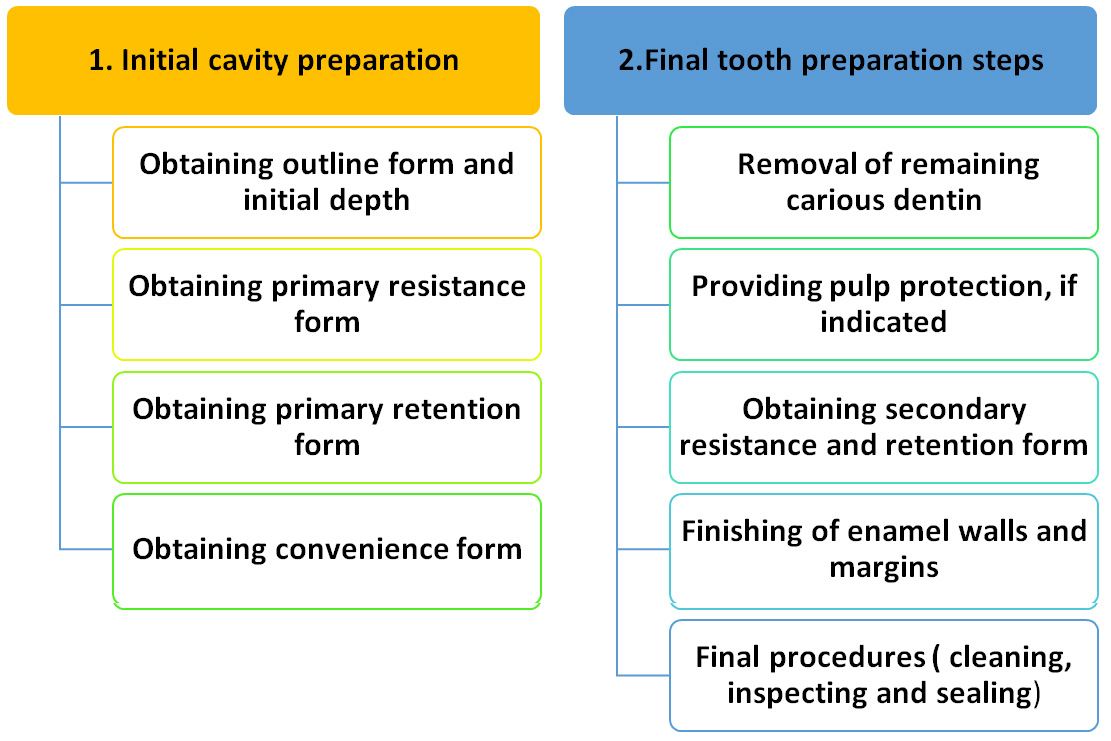
1. THE OUTLINE FORM:
- All faults, weakened enamel, caries and susceptible areas (deep groves, etc) should be removed (included in final outline form means extension for prevention)
- Margins should be adequate to allow proper finishing or restoration ( Giving the cavosurface angle (CSA) the correct angulation according to the restoration materials, for example 90° CSA for amalgam)
- initial depth of 0.2 to 0.8 mm into the dentin (beyond DEJ), the total depth is 1,5 – 2 mm dictaded by:
- Strenght requirement for restoration
- Establishment for retention
- Remove of caries.
- In case of two separate carious lesion, as in upper molars, cavities are joined if the intervening tooth structure is:
- Carious
- Weak i.e.; less than 0,5mm.
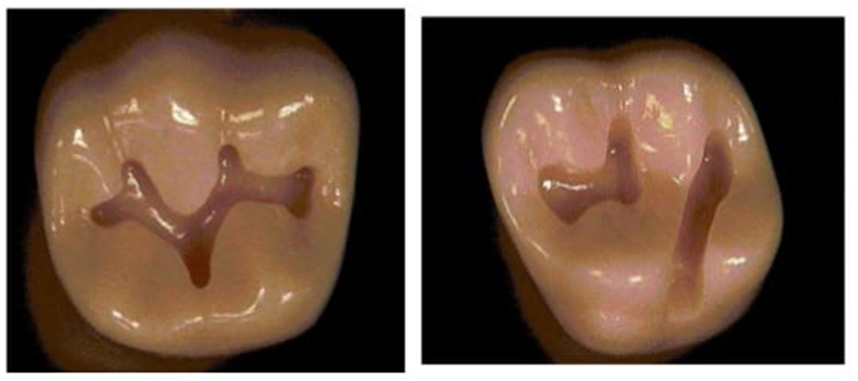
2. RESISTANCE FORM
“The shape given to the preparation that enables the restoration and the remaining tooth structure TOWITHSTANDMASTICATORY STRESS”
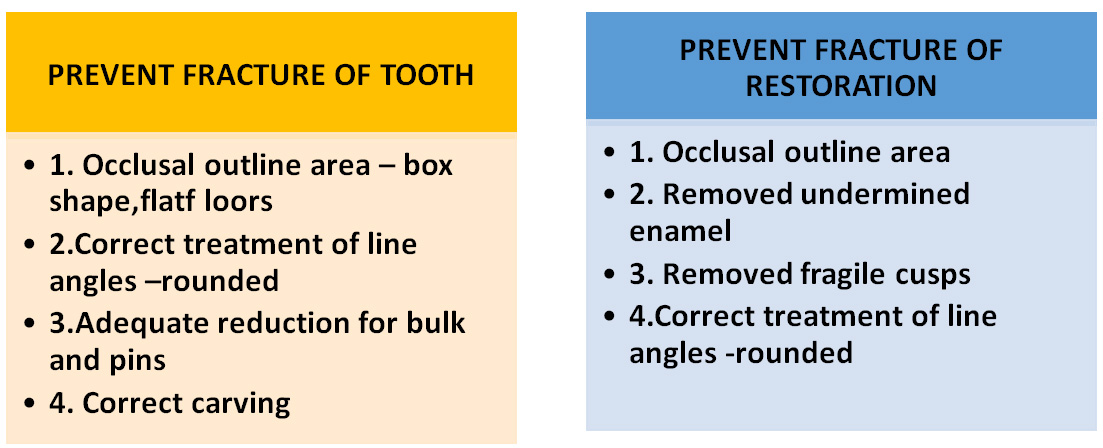
3. RETENTION FORM
“The shape of the internal aspect of a prepared cavity to PREVENT DISPLACEMENT OF THE RESTORATIVEMATERIAL”
“The form given to the tooth preparation, especially its detailed anatomy and general shape, which enables the restoration, that it will accommodate, TOAVOID BEINGDISLODGED BYMASTICATORYLOADING”
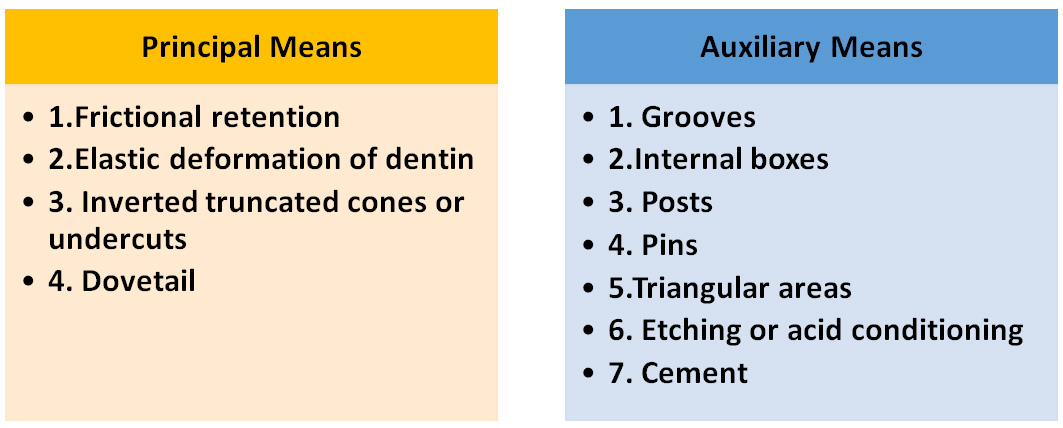
4.CONVENIENCE FORM
“The shape or form of the cavity that ALLOWS ADEQUATE VISION, ACCESSIBILITY, AND EASE OF INSTRUMENTATIONduring cavity preparation as well asinsertionoftherestorative material”
- Ideally, a tooth preparation fulfilling all the requirements for outline, resistance, and retention forms will be convenient to instrumentation.
Other Modes to Obtain ConvenienceForm
- Modificationsin tooth preparation
- Instrumentmodification
- Separation
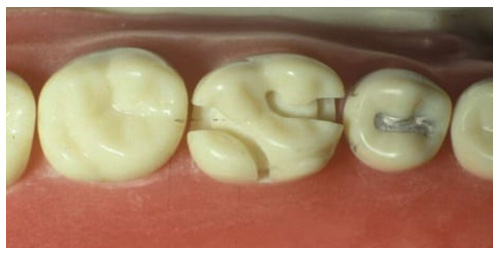
5. CARIES REMOVAL
“The mechanical and/or chemical actions resulting in COMPLETE ELIMINATION OF THE DISEASED, NONREPARABLE PORTIONS OF DENTIN”
- Acute caries–using the broadest discoid/spoon excavator
- Chronic caries–using large round bur preferably dull
REMOVAL OF DENTIN DEPENDS ON TWO CONDITION:

6. FINISH OF THE CAVITY WALL
“Involves REFINING OF CERTAIN AREAS OF THE CAVITY WALL: the dentin portion, the enamel portion and the cavosurface margin”
7. CAVITY DEBRIDEMENT
“Final step involving the use of explorer, air and water spray, and cotton pellets to REMOVE DEBRIS FROM THE CAVITY PREPARATION” “It consists of FREEING ALL ANGLES AND SURFACES OF DEBRIS and often includes medication and insulation procedures.
Click here to view QA and Description for Cavity Preparation




